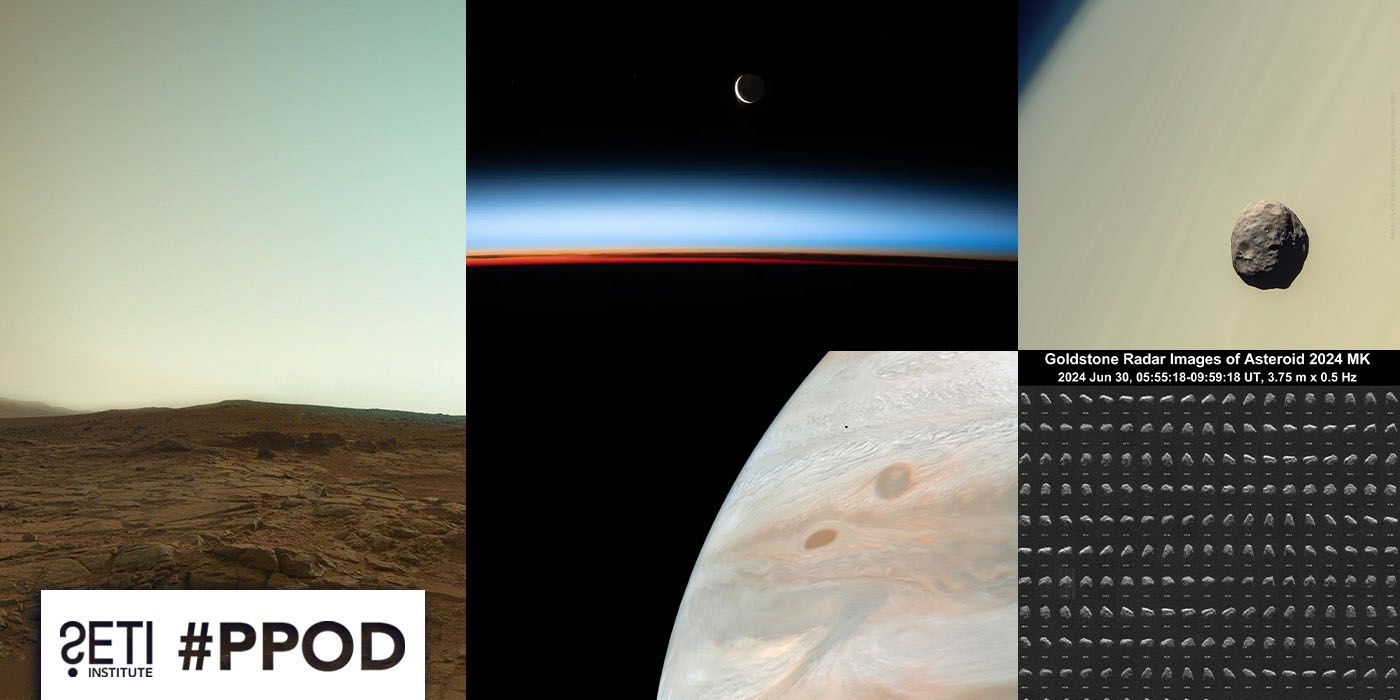
Planetary Picture of the Day
Week of July 8, 2024
A look back at four amazing images taken over the years of NASA science programs, including Earth, Jupiter, Saturn, and Mars. Plus one recent look at a tiny asteroid that passed close to home.
Monday, 8 July 2024
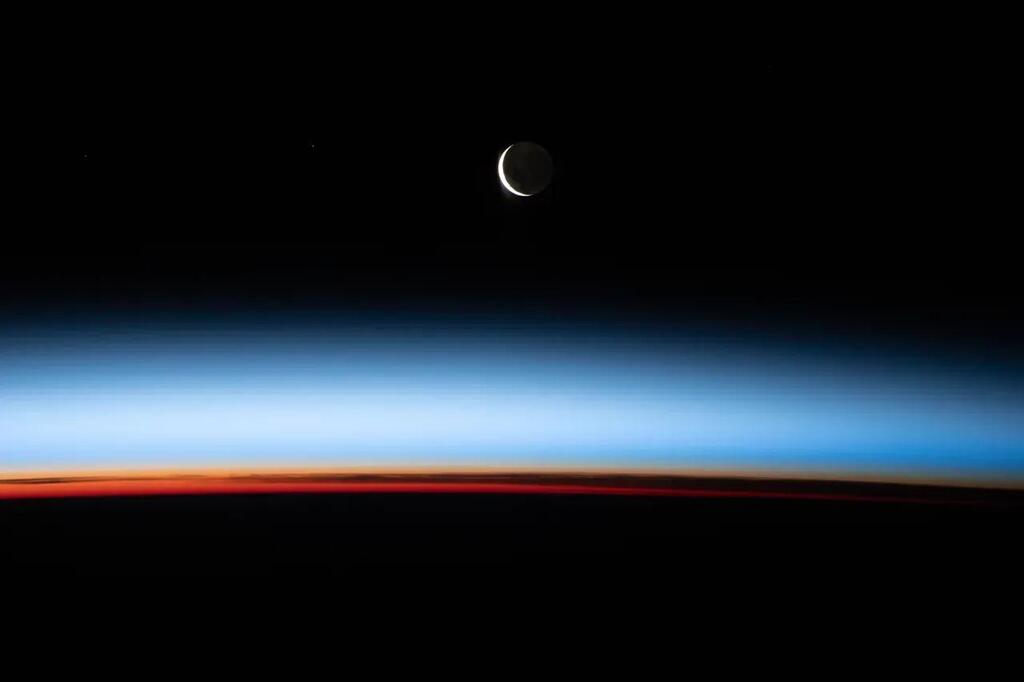
Planetary Processes
A waxing crescent moon is photographed from the International Space Station during an orbital sunset as the station flies 431 kilometers above the Pacific Ocean, east of New Zealand.
Above the surface of the Earth, a brilliant sequence of colors roughly denotes several layers of the atmosphere. Deep oranges and yellows appear in the troposphere, which contains over 80 percent of the atmosphere's mass and almost all of the water vapor, clouds, and precipitation. The pink-to-white region above the clouds appears to be the lower stratosphere; this atmospheric layer generally has few or no clouds. Above the stratosphere, blue layers likely mark the transition between the middle and upper atmosphere as it gradually fades into the blackness of outer space.
Tuesday, 9 July 2024
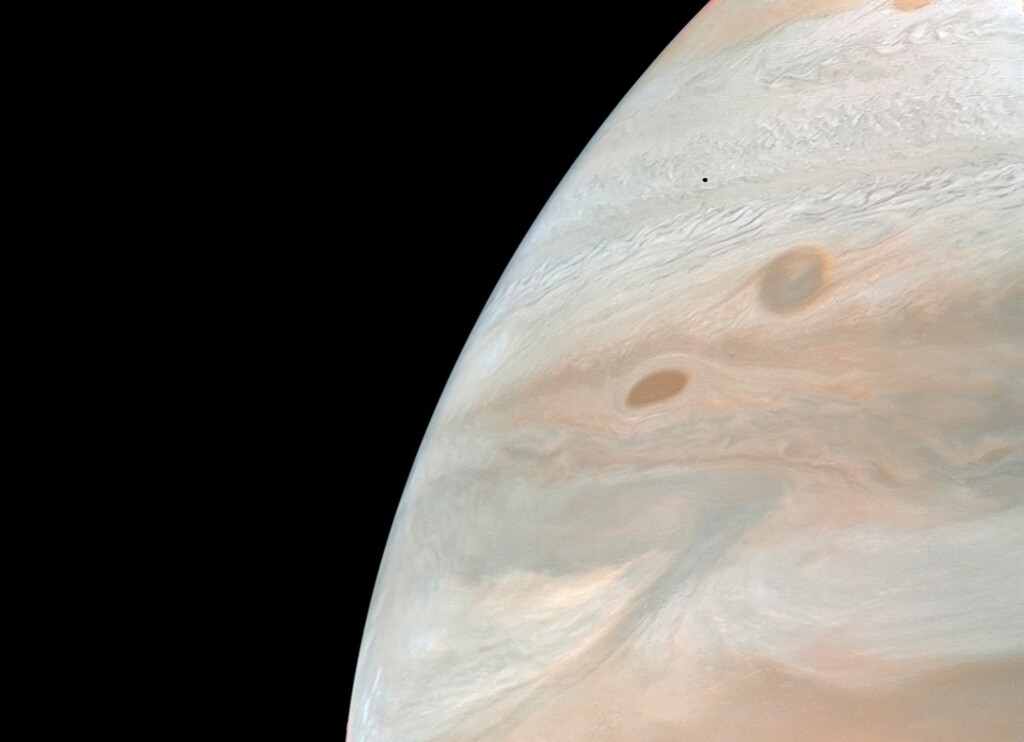
Jupiter and Amalthea from Voyager 2
#OTD in 1979, NASA's Voyager 2 spacecraft captured this wide-angle camera image of Jupiter and the irregular moon Amalthea (250 x 150 x 125 km), near Voyager 2's closest approach to the tiny moon and gas giant. At this time, Amalthea was located approximately 572,000 km from the spacecraft. This was a serendipitous observation of Amalthea, although Voyager 2 intentionally targeted the moon for imaging during the closest approach (~560,000 km) about 20 minutes later.
Wednesday, 10 June 2024
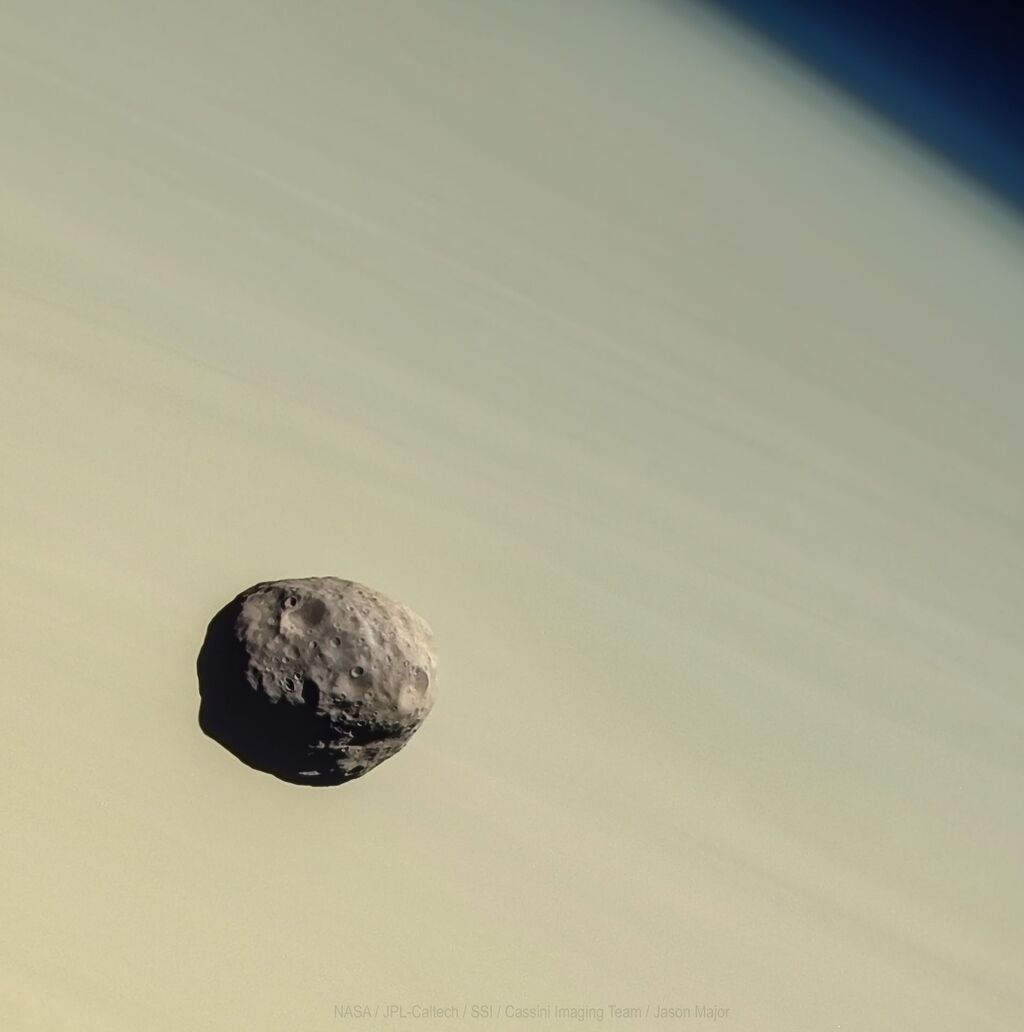
Janus in Front of Saturn
Saturn’s tiny 200-km-wide moon Janus was imaged by NASA's Cassini spacecraft on September 25, 2006. This little world exchanges orbits every four Earth years over 100 days with its partner moon, Epithemus. And the two also cause wavelike structures in Saturn's rings due to gravitational influences.
Thursday, 11 July 2024
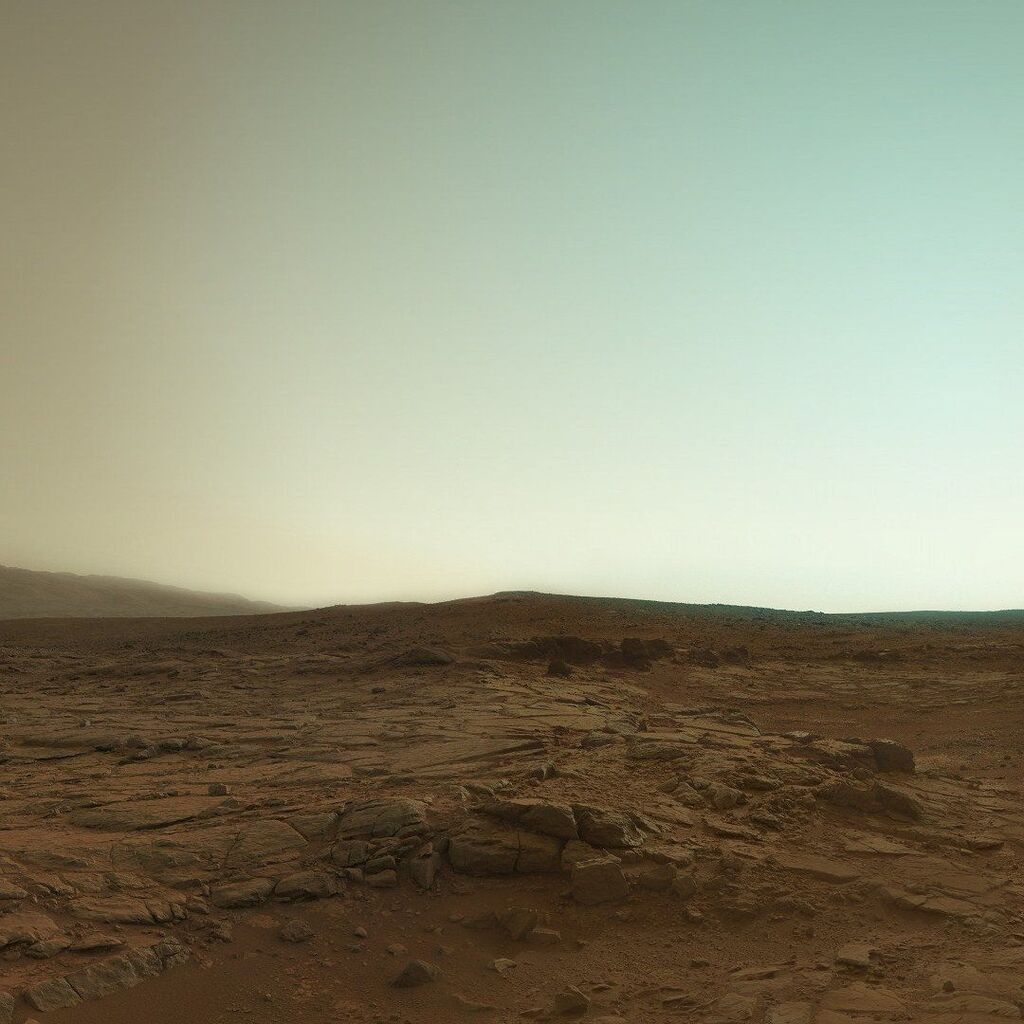
Martian Surface
Enjoy one of the greatest images ever taken by NASA's Mars rover Curiosity, from very early in her exploration of Yellowknife Bay at Gale Crater. The rover is now far away from this location, conquering the summit of Mount Sharp.
Friday, 12 July 2024

Asteroid 2024 MK
This mosaic shows NASA's radar observations in one-minute increments of asteroid 2024 MK, a 150-meter-wide near-Earth object, made on June 30, 2024, a day after it passed our planet from a distance of only 295,000 kilometers.
Close approaches of near-Earth objects the size of 2024 MK are relatively rare, occurring about every couple of decades, on average, so scientists at NASA's Jet Propulsion Laboratory in Southern California sought to gather as much data about the object as possible.





